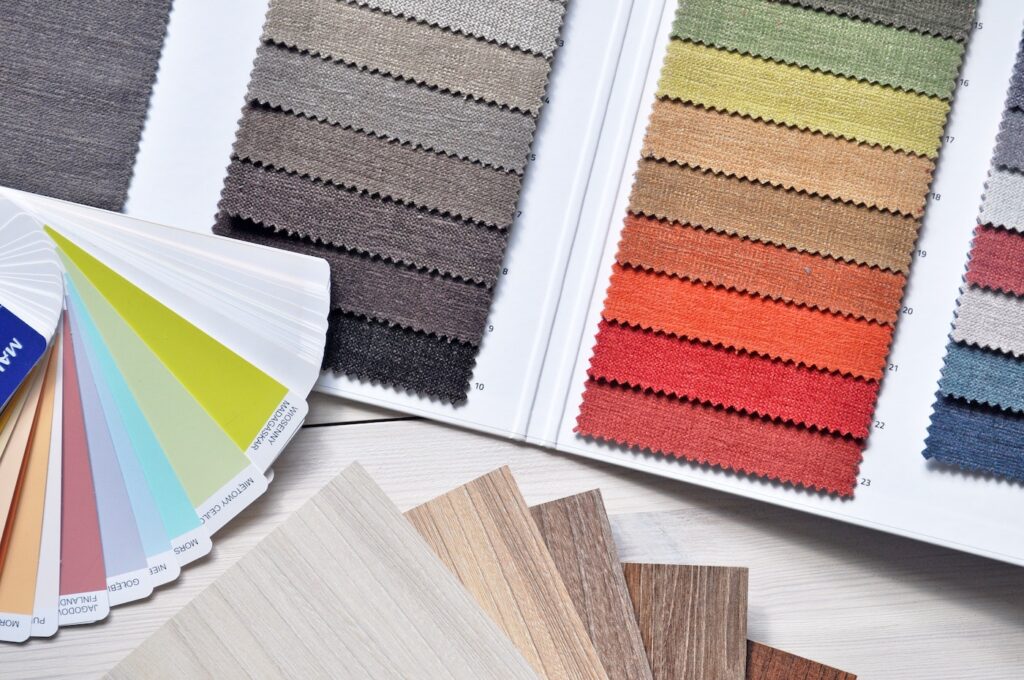One of the most exciting steps on your long list of tasks as a new homeowner is making the interior spaces your own with paint, décor, and furniture choices. Whether you’re furnishing your first apartment, working on a new home interior design, or changing up a home that has been in your family for generations–make your new home vibe with SA’s Southside using the hottest new home design trends of 2023.

A Guide to New Home Interior Design Trends
Our inspiration for this guide will be San Antonio’s vibrant Southside neighborhood, with its exciting new residential and commercial projects. However, the design tips here will fit well in a wide variety of urban, suburban, and rural settings throughout the US and beyond.
Using vibrant colors to create bold statement spaces is becoming increasingly popular for interiors, even as exterior trends lean towards neutral earth tones. Applying bold accent colors to doors, window treatments, or even entire walls is a great way to achieve the most impact.
Bold colors can be a great choice for interior elements because they allow you to make a statement. The draw of bold colors adds immediate visual interest, creating a focal point for your design in the same way the most eye-catching element in a painting helps the painter focus the audience.
A bold wall, carpet, or accent piece in a neutral room can add a great deal of character, drama, and personality while also setting a particular mood. Try using a bold red to convey energy and excitement, or a powerful blue to set the scene for serenity and tranquility.
Contrast is a crucial element in creating compelling designs; it can be used to delineate different areas in the same space, such as distinguishing between a kitchen and a dining room in the same physical space. Using even a modest amount of bold color to make one or two small elements pop will go a long way to establishing contrast and visual interest in your room.
More eclectic homeowners will be inclined to be more aggressive with their use of bold colors, and that’s okay—it’s your home, and it should look the way you like.
-
Combine Textures to Create Interest and Build Vibes
Combining and layering contrasting textures is a key tactic for painters and fashion designers, and it works just as well inside your home. Mixing different textures in your home, such as furs, velvet, leather, wood, metals, and stone is a great way to add depth to any space–regardless of size or color palette.
Mixing textures can be as simple as hanging a colorful serape blanket over a leather chair to make it look more inviting or building an entire feature around the idea of contrasting textures, such as a wall with panels of different materials.
Texture mixing can be especially fun when you use natural and simulated natural textures like wool, bark, leather, and rough stone to bring the feel of the outdoors into your home.
The use of natural materials, such as stone, wood, rattan, rustic weaving, and living plants, is becoming more popular as people seek to bring the peace and tranquility of the great outdoors into their homes to create warm, organic spaces.
You can find all sorts of plants, minerals, and animal products throughout Texas landscapes that can pull the state’s unique character into your home. It doesn’t have to be as obvious as a steer skull—unless that’s what you like. Stones and living plants are also excellent, and more subtle, touches.
Consider a picture frame or railing made of raw wood, or a mortared wall set with unfinished stones. The use of natural materials ties in well with our previous tip about mixing up textures, and it also ties into the next item on the list.
-
Sustainable and Eco-Friendly Design for Spaces You Can Feel Good About
As many of us become more aware of the impact of our lifestyles on the environment, sustainable and eco-friendly design is becoming a popular trend that allows us to live our values in a very literal way. While you may not be sure where to start, there is a wide range of ways to make your interior design choices more sustainable.
Sustainable interior design refers to any practice that involves creating interiors that have a minimal impact on the environment or even a positive impact on the immediate environment, such as in the case of using living plants to increase oxygen production. Here are some other great examples of sustainable interior design practices:
- Sustainable materials: Materials that are made from renewable resources, such as bamboo or cork flooring, and materials that have low embodied energy, such as recycled glass countertops, can give your space a one-of-a-kind look while also doing your part to protect the earth.
- Efficient appliances and fixtures: Plan your kitchen and bathroom designs around the use of Energy Star-rated appliances, which use less energy and help reduce greenhouse gas emissions. You should also consider low-flow shower heads, faucets, and toilets to reduce water waste.
- Reuse and recycle: Reusing old furniture and décor by shopping at garage sales and secondhand stores, in addition to recycling or repurposing your own materials through DIY projects, is a great way to reduce waste. Elements like vintage paper, odd metal implements, and glass fragments can be infinitely repurposed by a creative and artistic interior designer.
- Living walls and interior gardens: Living plants indoors can help improve indoor air quality, reduce energy usage, and provide a connection to nature. They can also be practical in other ways, such as growing a windowsill herb garden in a kitchen or dining room.
By incorporating sustainable design practices like these, interior designers can create spaces that are more beautiful and environmentally responsible.
-
Multi-Purpose Furniture for More Function per Square Foot
Space-saving, multi-functional furniture is becoming increasingly popular–not just among the current wave of “tiny house” enthusiasts–but for any homeowners or renters who seek to maximize the use of their living spaces.
Some good examples of multi-purpose furniture include the following:
- Fold-out beds/couches (“sofa bed,” “hideaway”)
- Hidden storage, such as inside an ottoman or under the seat of a bench
- Modular furniture, such as an item that can be broken down from a couch into several chairs to rearrange spaces as needed.
- Convertible chairs – some chairs can be reclined to create couch- or bed-like furniture.
- Loft bed with desk underneath
- “Multi-tasking tables” e.g., a coffee table with storage compartments
Remember, the only rule when new home interior designing for your own home is to have fun and create looks that make you happy. Don’t just worry about following current trends; use the colors and pieces that speak to you personally. After all, you’re the one who will be living with your choices.

